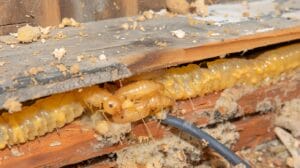Dealing with termites can be daunting, but it’s crucial to act fast. They might be small, but their impact on your home can be huge, and the costs can skyrocket if not managed promptly. The goal here is to give you the power to tackle termite damage head-on, ensuring your home’s integrity and your financial well-being. Let’s dive in.
Key Takeaways
- Spotting termite damage early can save you a significant amount of money.
- A variety of DIY solutions can help you repair minor termite damage effectively.
- Understanding when to call in professionals can prevent further structural damage.
- Regular maintenance and monitoring can keep your home termite-free post-repair.
- Being informed about the costs involved in termite damage repair helps you budget wisely.
Spot the Silent Invaders: Identifying Termite Damage
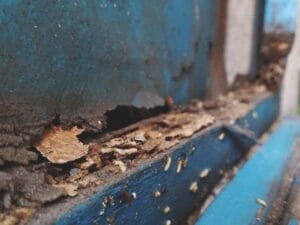
Termites are sneaky pests that can cause structural damage before you even know they’re there. To protect your home and wallet, you need to catch them quickly. Start by checking for the telltale signs of termite presence.
Visual Clues and Signs of Infestation
Keep an eye out for these red flags:
- Mud tubes on exterior walls, which termites use as highways to their food source.
- Discarded wings near windows or doors, often left behind after termites swarm.
- Wood that sounds hollow when tapped, indicating the termites have been busy inside.
Remember, early detection is your best defense. It can mean the difference between a minor repair and a major overhaul.
Structural Weaknesses That Point to Termites
Termites feast on wood, weakening your home’s structure. If you notice sagging floors or doors that don’t close properly, it’s time to investigate. These could be signs that the wooden supports have been compromised.
When to Suspect Hidden Termite Activity
Termites don’t always leave visible signs. If you live in an area prone to termites, or if your home has a history of infestation, stay vigilant. It’s wise to have a professional inspection annually.
Now that you know how to spot termite damage, let’s talk about what you can do about it.
Your Termite Damage Repair Toolkit
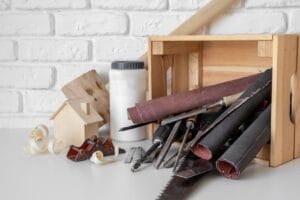
Armed with the right tools and materials, you can address minor termite damage and prevent future infestations. Here’s what you’ll need:
Essential Tools for DIY Fixes
- A hammer for removing damaged wood and for carpentry work.
- Chisel and pry bar for getting into tight spots.
- Screwdriver set for disassembling and reassembling affected areas.
- Wood filler or putty for patching small holes and crevices.
- Paint or stain to match the repaired areas to the rest of your home.
With these tools at the ready, you’re prepared to take on small repair jobs.
Materials to Strengthen and Restore
Besides tools, you’ll need materials to restore the integrity of your home:
- Pressure-treated lumber to replace damaged wood.
- Construction adhesive for added strength in repairs.
- Borate-based products to treat wood and deter termites.
- Silicone caulk to seal gaps and prevent further entry.
These materials will help you fortify your home against future termite attacks.
Remember, the goal is to empower you to take control of your home repairs, saving you money and protecting your investment. In the next sections, we’ll walk through the repair process step-by-step and discuss when to seek professional help.
Step-By-Step DIY Termite Repair
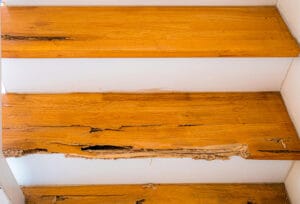
When you’ve confirmed termite damage, don’t panic. I’m here to walk you through a clear, step-by-step approach to repairing the damage yourself, when it’s appropriate. Remember, your safety and your home’s structural integrity come first, so assess the damage carefully before you begin.
Evaluating the Damage’s Severity
First things first, let’s figure out how bad the damage is. Poke the suspected areas with a screwdriver. If it goes through easily, you’ve got some work to do. Check the surrounding areas too—termites rarely limit themselves to one spot. For a more detailed guide on assessing termite damage, visit our Termite Infestation Costs: Prevention vs. Damage Repair Guide.
If the damage is extensive, or if you’re unsure about the extent, it’s time to call in the pros. But for minor damage, roll up your sleeves—it’s DIY time.
Simple Patchwork for Minor Damage
For small areas, wood filler is your friend. Here’s how to use it:
- Remove any loose or damaged wood.
- Apply the wood filler to the holes and gaps left by the termites.
- Smooth it out and let it dry according to the product instructions.
- Sand the area until it’s flush with the surrounding wood.
- Paint or stain to match your existing finish.
This simple fix can make your wood look as good as new.
Reinforcements for Compromised Structures
If the damage goes deeper, you may need to reinforce the structure. This can involve cutting out the damaged section and replacing it with new, pressure-treated wood. Use construction adhesive and screws to secure the new piece in place.
And remember, always treat any new wood with a termite-preventative solution to keep those critters from coming back.
Sealing and Finishing Touches
After repairs, seal any cracks or crevices with silicone caulk. This not only prevents water damage but also deters termites from re-entering. Then, give the repaired area a final coat of paint or stain for a seamless finish.
With these steps, you’ve taken control of the termite damage and put measures in place to prevent a recurrence.
When to Call in the Pros: Professional Repairs

Sometimes, the job is too big, too dangerous, or too complex for a DIY approach. That’s when you need to call in the experts. Let’s talk about when and why to seek professional help.
Assessing the Need for Expert Intervention
If you’ve discovered widespread damage, structural issues, or just don’t feel confident tackling repairs, it’s time to call the pros. They have the experience, tools, and knowledge to handle the job safely and effectively.
Professional pest control services can also offer termite treatments that protect your home long-term, something that’s not always achievable with DIY methods.
Understanding the Cost-Benefit of Professional Services
While hiring professionals can be more expensive upfront, they can save you money in the long run by ensuring the job is done right the first time. They can also identify and fix damage you might miss, preventing costly future repairs.
Nailing Down Costs: Budgeting for Repairs
 Let’s talk numbers. Repairing termite damage varies widely in cost, depending on the extent of the damage and the solution you choose. Here’s a general idea:
Let’s talk numbers. Repairing termite damage varies widely in cost, depending on the extent of the damage and the solution you choose. Here’s a general idea:
Balancing Quality and Affordability
DIY repairs can cost anywhere from a few dollars for wood filler to a few hundred for replacing larger sections of wood. Professional repairs, on the other hand, can run into the thousands, especially if structural work is needed.
But, investing in quality repairs means you won’t be revisiting the same issues anytime soon. It’s about finding the right balance for your situation.
For example, replacing a few feet of termite-damaged baseboard might cost around $50 if you do it yourself. However, if termites have compromised a load-bearing wall, professional repairs could exceed $5,000.
Hidden Expenses in Termite Repair Projects
Don’t forget to factor in the hidden costs. These might include:
- Temporary housing if the damage is severe and the repairs are extensive.
- Additional treatments to ensure termites don’t return.
- Costs associated with repairing cosmetic damage like drywall or paint.
Being aware of these potential costs helps you budget effectively and avoid surprises. For more detailed information, consider reading our Termite Infestation Early Signs & Detection Guide.
Now, let’s shift our focus to the future—protecting your home after you’ve dealt with the termite damage.
Termite-Proofing Your Property
After you’ve repaired the damage, it’s vital to take steps to prevent future infestations. Termite-proofing your home involves a combination of treatments and physical barriers. Apply termite repellent products to wood surfaces, and consider installing termite shields on your home’s foundation. These barriers can deter termites from entering and help protect your home from future damage.
Scheduled Maintenance and Monitoring
Regular maintenance and monitoring are the final pieces of the puzzle. Schedule annual inspections with a pest control professional to catch any new termite activity early. Additionally, keep an eye out for signs of termites, and maintain your home to make it less appealing to these pests. This includes fixing leaks promptly, ensuring proper drainage away from your home’s foundation, and storing firewood away from your house.
FAQs
How can I tell if I have termites?
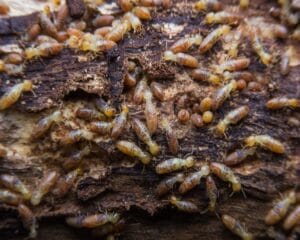
To determine if you have termites, look for signs like mud tubes, hollow-sounding wood, and discarded wings near entry points. If you’re unsure, a professional inspection can provide a definitive answer.
Can termite damage be completely repaired?
Yes, termite damage can be completely repaired, but the extent of the repair work depends on the severity of the damage. Minor damage can often be fixed with DIY solutions, while significant structural damage will require professional repairs.
How much does it typically cost to repair termite damage?
The cost of repairing termite damage varies. DIY repairs can be as low as a few dollars for materials, while professional repairs for extensive structural damage can exceed several thousand dollars. It’s important to get multiple quotes to understand the potential costs for your specific situation.
Are there any home remedies for preventing termites?
While professional treatments are most effective, some home remedies can help deter termites. These include applying orange oil or neem oil to affected areas, using borate on wood before priming and painting, and maintaining a dry, well-ventilated home.
How often should I inspect my home for termite damage?
It’s recommended to inspect your home for termite damage annually, especially if you live in an area prone to termite infestations. Regular inspections can help catch problems early before they turn into costly repairs.
Remember, the best offense is a good defense. By taking proactive steps to protect your home, you can avoid the stress and expense of dealing with termite damage in the future.
Repairing termite damage can seem overwhelming, but with the right knowledge and tools, you can tackle it confidently. Whether you’re filling in small holes or calling in the experts for major repairs, the key is to act quickly and decisively. By following the steps outlined in this Termite Damage Repair Guide, you can restore your home and protect it against future termite threats. Most importantly, you’ll be taking a big step towards safeguarding your financial well-being by preserving one of your most significant investments—your home.
In the end, remember that termites are a common problem for homeowners, but they don’t have to be a disaster. With vigilance and the right approach to repairs and prevention, you can keep your home termite-free and maintain its value for years to come. And if you ever feel out of your depth, don’t hesitate to reach out to professionals who can provide the expertise and peace of mind you need to navigate this challenge successfully.
